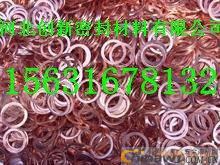Mechanical Seal Repair
A mechanical seal is a type of sealing mechanism that uses two components—a stationary ring and a rotating ring—placed perpendicular to the shaft. These two parts come into contact and rotate relative to each other, creating a tight seal. The pressure from the fluid being sealed applies a controlled force on the mating surfaces, ensuring they remain in close contact while maintaining a thin liquid film between them. This film provides hydrodynamic and static pressure, offering lubrication and balance to prevent leakage.
1. Cleaning and Inspection of Mechanical Seals
Before assembling a mechanical seal, it's crucial to ensure there are no impurities inside. Thoroughly clean all components such as the rotating ring, stationary ring, and bushing.
Next, inspect the surface of both the stationary and rotating rings for scratches, cracks, or any damage. Any imperfection can lead to significant leaks. You may use specialized tools to check if the sealing faces are flat. If they aren't, water could seep into the seal after assembly, causing the rings to separate and fail. In some cases, you might test hydraulic pressure before installation.
Check the seat of the stationary and rotating rings for any defects that could affect the seal. For example, flaws on the surface of the seal ring can compromise performance.
Inspect the spring for damage, deformation, or changes in its resistance. Also, examine the bushing for burrs, grooves, or other irregularities.
Clean and inspect all rubber seals for cracks, holes, or wear. Measure the diameter of the rubber ring to ensure it falls within the specified tolerance range.
If the mechanical seal includes a pumping mechanism, check the screw pump’s spiral for cracks or broken wires.
2. Dimensional Checks During Assembly
Measure the size of the sealing surfaces of the stationary and rotating rings. This helps verify the radial width of the friction surfaces. When using different materials, the hard ring should be 1–3 mm wider than the soft one to avoid edge damage.
Check the clearance between the rings and the shaft or bushing. The inner diameter of the stationary ring should be 1–2 mm larger than the shaft, while the rotating ring needs to be 0.5–1 mm larger to allow for movement and reduce vibration. However, too much clearance can cause the seal to jam.
Assess the mechanical seal's tightness by measuring the end face specific pressure. This pressure must be optimal—too high causes excessive heat and wear, while too low leads to leakage. To measure this, calculate the difference between the distances from the static and moving ring end faces to the gland.
Check the length of the compensation spring. Over time, springs may shorten or deform due to centrifugal force, affecting the seal's performance.
Measure the length of the anti-rotation pin and the depth of the pin hole to prevent misalignment during assembly, which could damage the seal.
3. Grinding the End Faces
After removing the rotating ring, start with rough grinding using abrasives of 80–160 grit, then proceed to fine grinding with more than 160 grit. For cemented carbide or ceramic rings, use a polishing machine with boron carbide (M28–M5) to achieve a mirror finish. Graphite-filled PTFE rings can be refined with kerosene or gasoline without abrasive, as they self-lubricate during operation.
Use a grinding machine or manual figure-eight grinding on a flat glass surface for better control.
4. Bushing Inspection
Check the bushing for rust or wear. Light rust can be removed with fine sandpaper, but severe damage may require electroplating or replacement.
5. Sealing Rings
Most sealing rings lose elasticity or age over time, so they usually need to be replaced.
6. Springs
If the spring is not corroded, it can retain its original elasticity. However, if it is heavily rusted or has lost significant strength, replace it. For seals with assembled boxes, clean the housing and check for worn or deformed grooves, which may require repair, re-grooving, or replacement.
After repairs, reassemble the seal and perform a pressure test before returning it to service.
**Packing Series**: Carbon packing, PTFE packing, graphite packing, high-water-based packing, aramid-PTFE mixed packing, aramid-carbon mixed packing, PTFE cutting wire packing, expanded PTFE packing, aramid packing, asbestos packing, carbon fiber packing, butter packing, oil-impregnated asbestos packing, asbestos rubber packing, glass fiber packing, ceramic fiber packing, nylon packing, composite fiber packing, ceramic packing, and more.
**Gasket Series**: PTFE gasket, PTFE-coated gasket, flexible graphite gasket, metal-coated gasket, asbestos rubber mat, graphite composite gasket, toothed gasket, asbestos gasket, ladle gasket, metal spiral gasket, graphite gasket, high-strength graphite gasket, PTFE gasket, rubber flange gasket, asbestos manhole gasket, asbestos hand hole gasket, autoclave special sealing ring, reactor kettle special sealing ring, etc.
**Rubber Products**: Silicone, fluororubber, nitrile rubber, EPDM, neoprene, and other custom-shaped products.
**PTFE Products**: PTFE rod, PTFE raw material belt, PTFE elastic belt, PTFE gasket, PTFE sheet, and more.
**Graphite Products**: Graphite packing, graphite rope, graphite gasket, high-strength graphite composite mat, flexible graphite packing ring, and other custom graphite parts.
Hebei Innovation Sealing Material Co., Ltd.
Mobile: [Phone Number]
Phone: [Phone Number]
Website: [Website URL]
Contact: Business Manager

Volvo Parts,Volvo Spare Parts,Volvo Parts Truck,Volvo Motor Parts
JINING SHANTE SONGZHENG CONSTRUCTION MACHINERY CO.LTD , https://www.stszcmparts.com